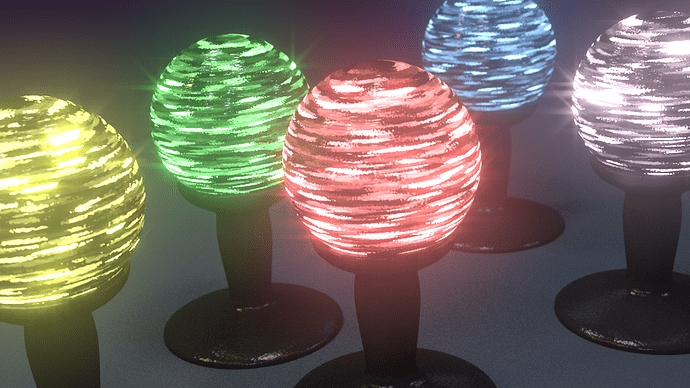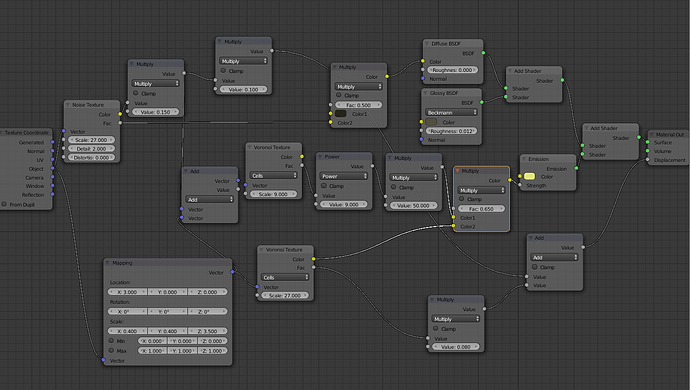Glowing glitter orbs - an experiment in creating “almost hurts my eyes” glare using the compositor.
I’ve not used the compositor at all before, except maybe a long-forgotten tutorial or two. The orbs are just simple spheres, and the stands nothing fancy. The orb material has some diffuse shader, some shiny glossy, and obviously emission shaders. The main texture pattern is two Voronoi, squeezed along z, at two different scales. Scale factors are 11 and 27, I think I have now, but the orbs have independent copies of the node to allow experimenting.
For feeding the emission, one Voronoi texture is pushed through a power node, set to 7th, 8th or 9th power, and multiplied by somewhere 20 to 50 to be very overbright. That creates the hotspots for the compositor to make glare from. The compositor puts an orbs-only layer through a wide (r=140) and a narrow (r=22) Gaussian, and a Glare node. A RGB Curve node decreases the intensity of all but the hotspots of the orb-only image before going through the Glare node. The three effect images and full render layer are added/mixed for the output.
A Noise node perturbs the coordinates fed to the higher-frequency Voronoi, and also the Material Displacement for the bumpy-glass surface. The low-freq Voronoi also contributes to the displacement, to help give it a rougher look correlated with the brightness.
I like the overall sense of bright lights, the prettiness, and sense of the bumpy glass. In outline, the bumps don’t show along the edges though the Guassian-smeared hotspots do prevent the outlines from being hard exact circles.
This was done with Blender 2.68. (2.69 and 2.70 have been acting whacky lately.) There are no external images, post-processing, etc - all nice pure Blender!
This was fun and quick! Now to make something of greater artistic or illustrative value using the compositor…
Orb material nodes:
Compositor Nodes:
(I’m waiting to see something like Viewer nodes for the materials. There was some guesswork in adjusting settings.)


